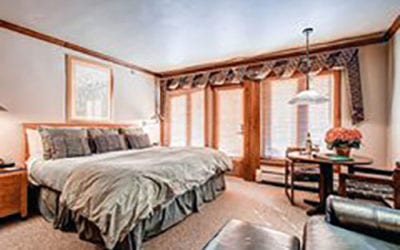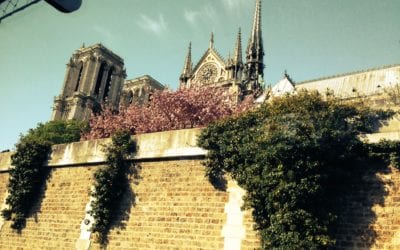 Once, I used to scramble from sight to sight trying to squeeze in as much experience as possible. Today, I move more slowly, take my time and soak in as much history and atmosphere as possible. Enjoying what I visit to the fullest is far more important than visiting everything.
Once, I used to scramble from sight to sight trying to squeeze in as much experience as possible. Today, I move more slowly, take my time and soak in as much history and atmosphere as possible. Enjoying what I visit to the fullest is far more important than visiting everything.
My plan for the day seemed less than challenging – a visit to Seville’s exotic Alcazar, then a walk through the massive cathedral, lunch at one of the city’s top restaurants and an hour or so in the new interactive Flamenco Museum. It almost worked, but the magic of the Alcazar consumed me and unexpected friends calling just before lunch changed the repast into a three-hour celebration of wine lubricated stories.
After a 20-minute walk from my hotel past the new metro construction, the Palace of Justice, the old tobacco factory and along the royal gardens, the line to enter the Alcazar seemed to stretch forever out the Lion’s Gate of the palace across the square to the door of the Cathedral.
 A new system of limiting visitors is in the palace combined with a foggy system of dealing with tour groups insure some sort of wait during the height of the day. The doors opened at 9:30 a.m. and I arrived at around 10 a.m. (I returned about an hour prior to closing and found no line. Whether that is normal or not, I can’t say.) That being said, the wait to enter was less than 20 minutes.
A new system of limiting visitors is in the palace combined with a foggy system of dealing with tour groups insure some sort of wait during the height of the day. The doors opened at 9:30 a.m. and I arrived at around 10 a.m. (I returned about an hour prior to closing and found no line. Whether that is normal or not, I can’t say.) That being said, the wait to enter was less than 20 minutes.
Seville’s Alcazar is still a functioning royal palace used by Juan Carlos during official visits to the city. Built on the footprint of old Roman forts and the central Moorish stronghold, Seville’s Alcazar is a monument to Mudejar opulence. The lush display of Arabesque calligraphy and detailed decoration lends a sensual mood to the building.
When I first visited this palace several decades ago, I mistakenly thought Arab rulers built it. I could see hundreds of virgins scampering through the gardens in gossamer silk dresses streaming behind them as they frolicked between the towering palms and the colorful blooming flowers. Every fantasy of a Middle Eastern harem ran wild.
 Alas, the palace as visitors walk through it today was built and decorated after the Moors were conquered and driven out of Seville. Mudejar artisans –Moorish artists who converted to Christianity — completed the intricate artwork under the direction of Spanish royalty and architects. The gardens are a continuum of botanical work – Arab, Renaissance, Baroque — stretching back far more years than the building’s décor.
Alas, the palace as visitors walk through it today was built and decorated after the Moors were conquered and driven out of Seville. Mudejar artisans –Moorish artists who converted to Christianity — completed the intricate artwork under the direction of Spanish royalty and architects. The gardens are a continuum of botanical work – Arab, Renaissance, Baroque — stretching back far more years than the building’s décor.
That being said, this Arabesque inspired palace evokes a very non-Western feeling within the series of rooms known as the Palace of Pedro the Cruel. Here, Gothic and Western artistic touches are blended with the sumptuous Mudejar woodwork, tiles, calligraphy and designs.
A good guidebook and a sense of history (Isabelle and Ferdinand received their after-action report from Columbus here) bring the Alcazar alive. The repetitive intricacy of the details of the decoration can almost create a meditative state and the gardens are otherworldly changing with the time of day, the ebb and flow of the crowds and the seasons.
Though plans originally called for visiting the Cathedral after the Alcazar, it was almost lunchtime when we exited the gardens through the carriage house, and the cooking and restaurant school of the Taberna del Alabadero (Zaragoza, 20, tel. 954-502721) was calling.
 This venerable institution, started, I understand, as a restaurant school for orphans by a Jesuit priest, has a worldwide reputation for excellent cooking and elegant presentations. Mario Leon from Dali Restaurant and Tapas Bar knows the founder of the establishment. Our lunch was at the afternoon training sessions where student chefs and wannabe waiters and maitre d’s strut their stuff under the watchful eyes of their teachers. Their uncertainty and slight apprehension is palpable as they strive towards perfection.
This venerable institution, started, I understand, as a restaurant school for orphans by a Jesuit priest, has a worldwide reputation for excellent cooking and elegant presentations. Mario Leon from Dali Restaurant and Tapas Bar knows the founder of the establishment. Our lunch was at the afternoon training sessions where student chefs and wannabe waiters and maitre d’s strut their stuff under the watchful eyes of their teachers. Their uncertainty and slight apprehension is palpable as they strive towards perfection.
The fixed daily three-course menu served in the street-level dining rooms costs only Euros 12.95 and the wine list is amazingly affordable. Starters ranged from rice with mussels and prawns to leek cream soup and marinated tomatoes to eggs over spinach. There is always a choice of several meat and fish dishes such as sole with pisto manchego and salmon a la parrilla or pork con salsa de miel and veal stew. Desserts presented included coconut and mango creamy rice and almond cake with strawberries and cream.
Upstairs, the formal semi-private dining rooms surrounding the covered atrium, serve the full-service gourmet menu to diners willing forego the culinary training sessions on the ground floor. The student lunches are served from 1 to 4 p.m. and do not take reservations.
 After lunch, we headed to the new interactive Museum of Flamenco Dance (Calle Manuel Rojas Marcos, 3 tel. 954 340311) tucked a few blocks into the tight Seville streets several zigzags north of the cathedral and three blocks east of Plaza Nueva. I’m not sure I would send someone to the museum unless they were real flamenco aficionados. It’s a bit pricey and doesn’t really give a newcomer to flamenco much basic information. Those who love the dance will revel in the details of its development. An impromptu Flamenco lesson might add some sensuous elegance to your dancing.
After lunch, we headed to the new interactive Museum of Flamenco Dance (Calle Manuel Rojas Marcos, 3 tel. 954 340311) tucked a few blocks into the tight Seville streets several zigzags north of the cathedral and three blocks east of Plaza Nueva. I’m not sure I would send someone to the museum unless they were real flamenco aficionados. It’s a bit pricey and doesn’t really give a newcomer to flamenco much basic information. Those who love the dance will revel in the details of its development. An impromptu Flamenco lesson might add some sensuous elegance to your dancing.
Leaving the Museum of Flamenco we headed to the cathedral that we thought was reportedly closing at 7 p.m. Unfortunately, our information (from Rich Steves’ Spain 2008) was out of date and the cathedral was already closed. We’ll have to leave that for another day.
A quick Euro 5 taxi ride took us home where we collected ourselves for a foray into the Barrio Santa Cruz for tapas, beer and wine.
 Tapas in Seville
Tapas in Seville
Seville considers itself one of the tapas centers of the universe. There are two entirely different tapas experiences – the tourist tapas bars focused in the warren-like streets of Barrio Santa Cruz and the locals’ tapas experience found everywhere else. Few tourists seem to venture outside of Santa Cruz and only a handful of locals leave their neighborhoods and wander into Santa Cruz. Mario of Dali Restaurant and I made it our mission to test as many tapas bars as possible during our time in Seville. These stood out.
Within Santa Cruz the two quintessential establishments are Las Teresas and Bodega Santa Cruz (Las Columnas). Las Teresas is an L-shaped bar festooned with plenty of photos of days gone by and a line-up of jamon Serrano hanging above the bar. Belly up to the bar and order drinks and few tapas from their menu.
Las Columnas, on Mateos Gago, presides at the end of the block with entrances from several sides. The dark wooden bar has Moorish tile highlights, specials scribbled on blackboards and crusty bartenders who have seen plenty of tourists.
 Both bars are happening places most of the evening. If you are lucky, grab one of the tables and enjoy an assortment of tapas with a bottle of wine. With three sharing, a bottle fills about two glasses of wine each and ends up saving 30 percent. On any night these are great places to meet fellow tourists and swap tales.
Both bars are happening places most of the evening. If you are lucky, grab one of the tables and enjoy an assortment of tapas with a bottle of wine. With three sharing, a bottle fills about two glasses of wine each and ends up saving 30 percent. On any night these are great places to meet fellow tourists and swap tales.
On the other side of the river, Jose Luis Bar on Plaza Cuba, has wonderful tapas and wines with an upscale local crowd. Hardly a tourist is seen except the few that wander by in search of a misplaced hotel. It’s not a place to meet anyone, but a perfect place to relax out of the tourist hubbub.
Photos by Charles Leocha (top to bottom)
Alcazar Court of the Maidens
Alcazar entrance line
Alcazar gardens
Taberna del Alabardero
Flamenco Museum
Bodega Santa Cruz
Las Teresas

Charlie Leocha is the President of Travelers United. He has been working in Washington, DC, for the past 14 years with Congress, the Department of Transportation, and industry stakeholders on travel issues. He was the first consumer representative to the Advisory Committee for Aviation Consumer Protections appointed by the Secretary of Transportation from 2012 through 2018.



